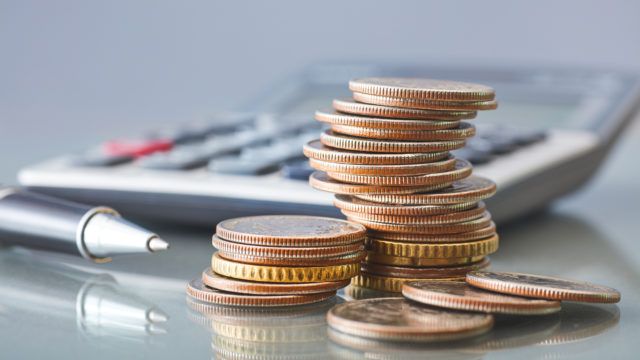The most recent Janus Henderson Global Dividend index showed clear signs of improvement in the first quarter of 2021. The pace of dividend cuts markedly slowed, leading the fund group to conclude “we are more positive than we were in January and see significantly fewer downside risks.” With this brighter future ahead, why is the global equity income sector still struggling? asks Portfolio Adviser, a sister publication of FSA.
The index shows dividends fell 2.9% on a headline basis to $275.8bn (£195bn), but this fall was exaggerated by lower one-off special dividends in the US. Excluding those, the fall was just 1.7%. Only one company in five (18%) cut its dividend.
Equally, there were pockets of real strength. Buoyed by the commodities and banking sectors, Canada reported record payouts over the quarter. North America as a whole saw dividends fall just 0.3%. Emerging markets were boosted by dividend restorations in Brazil, India and Malaysia. Even in Europe, one of the worst hit in 2020, dividends appeared to be coming back strongly.
In sector terms, higher commodity prices pushed mining dividends to new heights, while banking was another area of strength as regulators allowed the sector to restart payments. Utilities and healthcare also saw higher payouts, as did consumer discretionary sectors, that had been directly impacted by continuing lockdown restrictions. The only notable weak spot was the energy sector.
This (relatively) rosy picture does not appear to have been meaningfully reflected in share prices. The long-term underperformance of global equity income funds is significant. Over five years, the average global equity income fund is up just 66.6%. While this beats the dismal UK equity income sector (32%), it does not come close to the global sector, where the average fund rose 96.4%.
While this has adjusted since the vaccine rollout, it hasn’t been by much. The global equity income sector is up by 9.8% over the past six months, against 8.7% for the global sector. It’s a recovery of sorts, but goes little way to addressing the structural underperformance that has persisted over the longer-term.
Undoubtedly, some global equity funds have benefited from the resurgence in value, but it is not universal. It is possible to draw the unwelcome conclusion that an income mandate has tied the hands of growth managers in 2020 and of value managers in 2021.
Better times ahead
Could this adjust as dividends revive? Certainly, equity income investors appear to be losing a major headwind. Janus Henderson client portfolio manager Jane Shoemake says: “Global dividends were much more resilient than we anticipated. Post the global financial crisis, dividends had fallen by around a third. Last year, we thought they would fall 20%, but the report shows they fell by just over 10%, a significantly better outcome than we had originally forecast.
“Dividends may still fall in the first quarter of the year, but will bottom in April and rebound from there. There is still a lot of uncertainty… but under our best case scenario, we expect dividends to rise by 2-3% this year.”
Newton Investment Management head of equity income Ilga Haubelt (pictured) agrees that better times are ahead. “Overall, income investors can be more optimistic on dividend payments resuming going forward,” she says. “As we moved through 2020 the recovery in equity markets was sharp, and we saw companies reinstating or considering reinstating dividends as quickly as they had removed them. In fact, in 2020, dividend payments for companies in the S&P 500 index were actually greater, in aggregate, than in 2019.
“With the added impetus provided by positive news of successful vaccine rollouts and the promise of returning to ‘normal’ life as well as with the effects of political and regulatory pressures on companies easing, we expect global dividends in 2021 to recover to the levels of distribution we experienced in 2019.”
Pandemic has enabled sector to check its health
There is also a sense that the sector may return in a healthier state. Alasdair McKinnon, manager of the Scottish Investment trust, says: “There had been a view in some areas that once you increased the dividend, you shouldn’t cut it. Some companies had got in a mess. They had had periods where they’d done very well, growth had run out and they were stuck with the lead weight of trying to grow their dividend.” The pandemic has given them the cover they needed to rebase their dividends and start growing again from a lower base.
The impact of inflation is difficult to quantify. Normally, equity income is weaker at a time of rising bond yields. However, given the underperformance of equity income in 2020, that relationship appears to have broken down. Also, dividends are generally a better option than fixed income in an inflationary world.
As Fidelity International points out: “Dividends are a share of the corporate profit pool, and so when profits are rising, they can rise too. This growth means they can increase in line with, or ahead of, inflation, protecting the real purchasing power of these income streams.”
Competitively valued
Equally, many dividend stocks have fallen between two stools, leaving them looking cheap. Over the past 12 months, investors have either sought the reliable growth of technology stocks, or – since the vaccine news – reopening plays such as travel and leisure. Defensive areas such as consumer staples and healthcare have fallen through the gap and now look competitively valued compared to the wide market.
There is a lot to be said for the global equity income sector today: it is well-valued, dividends are returning and it should be on the right side of the inflation trend. However, it remains to be seen whether investors will reverse their long-held disdain.
















